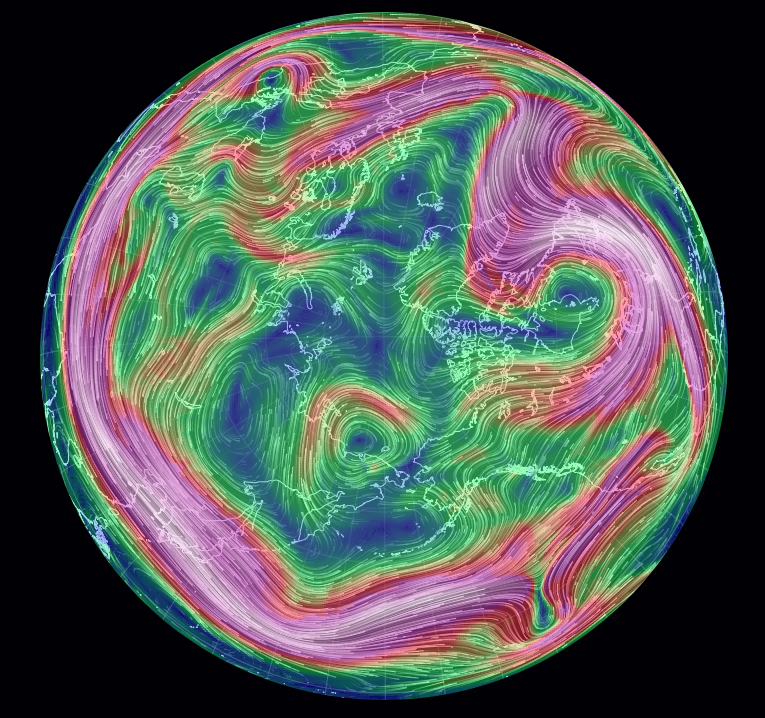The northern hemisphere (NH or Boreal) polar vortex is a bit more irregular than the southern hemisphere's (SH or Austral) due to greater anisotropy of land masses near the north pole. See NOAA's Arctic Climate and the Polar Vortex page.
 |
| 500 mb NH wind speed (screenshot http://earth.nullschool.net) |
 |
| 250 mb NH wind speed (screenshot http://earth.nullschool.net) |
Occasionally, the vortex becomes VERY wavy and dips down into mid-latitudes, bringing cold air along with it. These episodes are often associated with a sudden stratospheric warming (SSW). SSWs and mid-latitude cold blasts happen every few years (more if you count both poles).
I feel your pain and will think of my midwestern and east coast friends while I sip coffee in my shorts at the beach today.
People better qualified than me have explained the connection between SSW, arctic cold air masses, and how a single event like this is not an indicator of global warming.
24hourprof
Cliff Mass is particularly vehement
Jennifer Francis suggests that reduction of arctic ice leads to more waviness in the polar vortex
Elizabeth A. Barnes sees no net increase in waviness over 1980-2011
NASA on the SSW in January 2013
NASA background on SSW and Ozone
The Barnes article is a Geophysical Research Letter (GRL), a short communique to disseminate preliminary research. I think that a 31 year study is a good start, but I withhold judgement until I see more evidence and a longer-term study.
No comments:
Post a Comment
Comments are open for recent posts, but require moderation for posts older than 14 days.